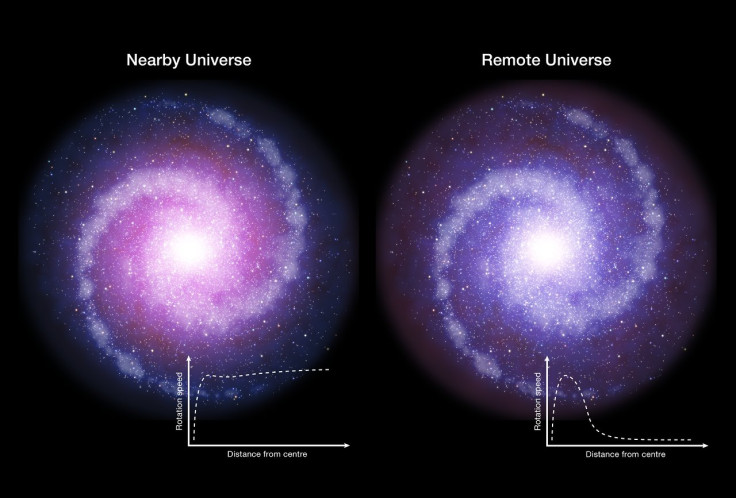Dark matter has been taking over the universe since the first massive galaxies formed 10 billion years ago
At the peak of galaxy formation, normal matter appears to have dominated the cosmos.
At the peak of galaxy formation 10 billion years ago, there was far less dark matter in the universe, scientists have discovered. This means dark matter – the nature of which is still a mystery – was far less influential when the universe was in its infancy than it is today.
Dark matter makes up about 27% of the universe today. In comparison, normal matter (everything visible) makes up just 5%. The rest is dark energy – which we think is the force behind the expansion of the universe. We know dark matter is there because of the way galaxies rotate. They move at such fast speeds that without some invisible force holding them together, they would be torn apart.
In a study published in Nature, researchers have now looked at six massive, star-forming galaxies from when the universe was around four billion years old. These distant galaxies were observed using the ESO's Very Large Telescope, which allowed researchers to measure the rotation of the galaxies.
Their findings were something of a surprise. Unlike the spiral galaxies we see today, the outer regions of the six observed appear to be rotating far slower than the areas close to their centers – a finding that is at odds with simulations of how early galaxies form.
It also suggests that there is less dark matter present compared to galaxy we see today. Reinhard Genzel, lead author of the study, explained: "Surprisingly, the rotation velocities are not constant, but decrease further out in the galaxies. There are probably two causes for this. Firstly, most of these early massive galaxies are strongly dominated by normal matter, with dark matter playing a much smaller role than in the Local Universe. Secondly, these early discs were much more turbulent than the spiral galaxies we see in our cosmic neighborhood."
But what does this mean? Researchers say it could indicate that gas in galaxies early on in the universe condensed into disks fairly quickly, while dark matter remained far more spread out, taking much, much longer for it to condense. While it has a huge effect on the rotations of galaxies today – including the Milky Way – for distant galaxies it has far less influence.
Researchers say the findings could help improve our understanding of the formation and evolution of galaxy formation. In a related News & Views article, Mark Swinbank, from the Department of Physics and Astronomy at Durham University, said the findings indicate that there was "little room" for dark matter in these early galaxies.
In terms of the implications, he added: "Ruling out the possibility that Genzel and colleagues' galaxies are atypical will require a larger sample than that studied by the authors. Nevertheless, by measuring the contribution and spatial distribution of dark matter, stars and gas in distant star-forming galaxies, the authors' work is an important step towards identifying the dominant physical processes responsible for galaxy formation.
"In particular, their results shed light on how the star-forming, clumpy, irregular galaxies seen in the distant Universe transformed into the distinctive spiral galaxies, such as the Milky Way, that we see today."

© Copyright IBTimes 2025. All rights reserved.






















